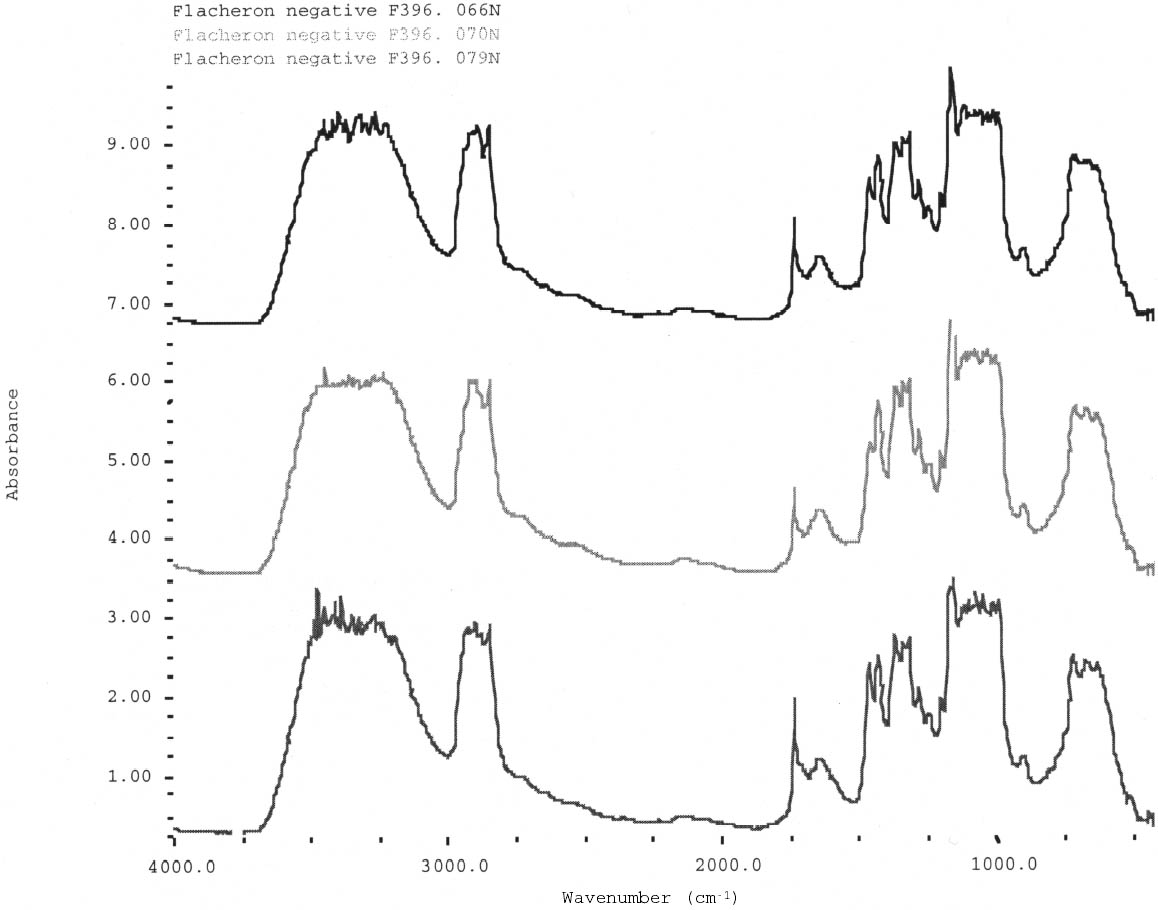“A TRANSPARENT ATMOSPHERE”: THE PAPER NEGATIVES OF FR�D�RIC FLACH�RON IN THE HARRISON D. HORBLIT COLLECTIONLEE ANN DAFFNER
4 THE COATINGThirty-two Flach�ron negatives at the Bibliotheque Nationale in Paris were visually examined, and only two exhibited coatings similar to those analyzed in the Houghton Library. Therefore, from a total of 69 Flach�ron negatives examined in this study, only 6 appear to have resin applications. Something important to Flach�ron warranted the extra step with these paper negatives, certainly for the production of the final positive print. Further study of these specific views of Rome may shed light on which images were in demand for printing and exhibition. Flach�ron's application of the coating is selective, as opposed to overall, suggesting he wanted to alter or improve the image. He may have thought it would further enhance the details of the image by locally increasing the transparency of the paper, as resins will render paper more transparent than wax. If the coating had been applied overall, it could be shown that the resin was possibly meant as a protective layer, such as the varnish on a wet collodion negative, protecting the image from abrasion and chemical staining by soluble silver salts. Although none of the negatives are coated
The presence of sandarac provides some information on the working properties of the resin coating and why Flach�ron may have incorporated it into his coating. Sandarac is soluble in alcohol and will dry quickly to form a thin, hard varnish, which makes it easy to use and able to adhere to a waxed coating on the lightweight Whatman paper used by Flach�ron. As early as 1804, sandarac is mentioned as a component in varnishes “destined for articles subject to friction, such as furniture, chairs, fan-sticks, mouldings, etc., and even metals, to which it may be applied with success. The sandarac gives it great durability” (Tingry 1804, 119). By 1833, recipes for alcohol-based varnishes for paintings containing sandarac and alcohol can be found (Carlyle 1991). These fast-drying varnishes are also mentioned in relation to retouch varnishes. In 1888, sandarac varnishes for glass plate negatives were noted for their ability to “admit any amount of retouching with plumbago” (Burbank 1888, 170). Graphite retouch is present on both the recto and verso of many Flach�ron negatives, although a direct correlation between the two components was not observed. |
